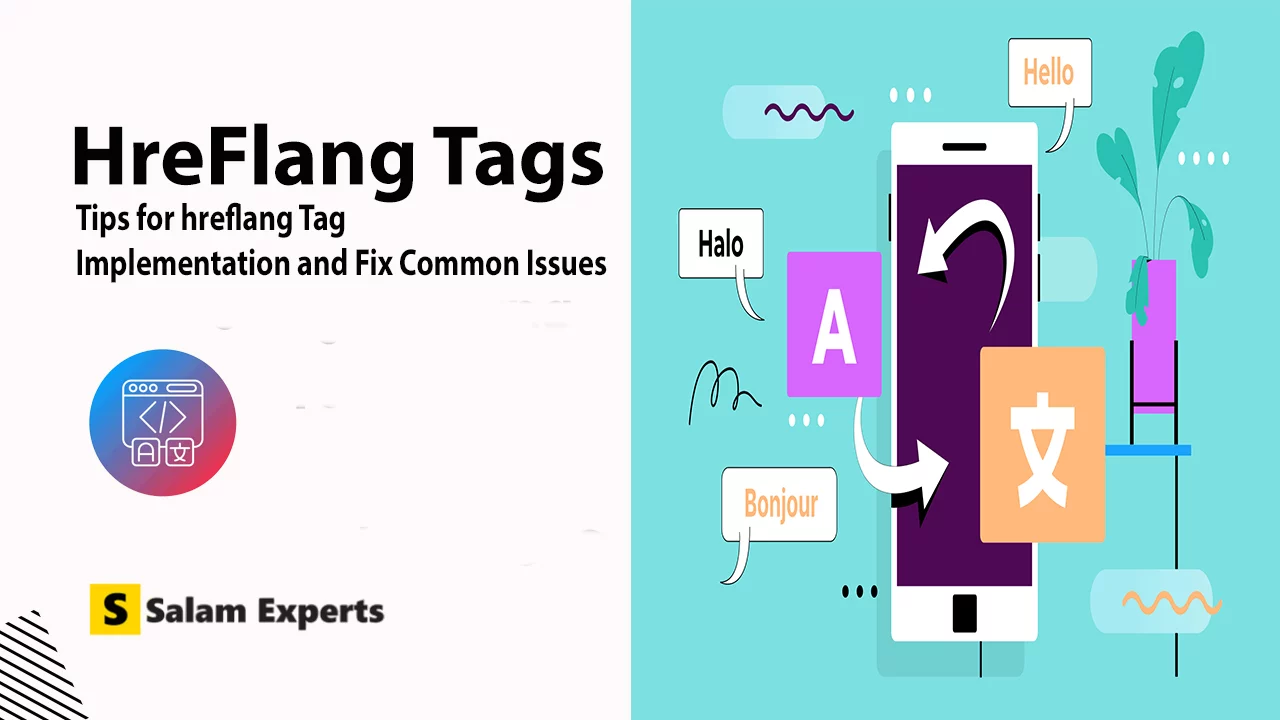Hreflang Tags: Tips for hreflang Tag Implementation and Fix Common Issues

For businesses and websites with a global reach, hreflang attributes are a key tool for optimizing international SEO. These attributes help search engines understand the language and regional targeting of your content, ensuring that users are directed to the appropriate version of your site.
Mastering the implementation of hreflang attributes can enhance user experience, increase engagement, and boost your search rankings across different regions. In this guide, we’ll explore essential tips for effective tag implementation and provide solutions to common issues that may arise.
What Are Hreflang Attributes?
Hreflang attributes (hreflang tags) are HTML tags that specify the language and regional targeting of a web page. They are used to inform search engines about the intended audience for a particular page, helping to avoid issues with duplicate content and ensuring that users see content in their preferred language or region.
How Hreflang Attributes Work
When implemented correctly, hreflang attributes help search engines like Google understand which version of a page to display based on a user’s language and location. For example, if your site has both English and Spanish versions, hreflang tags help direct English-speaking users to the English version and Spanish-speaking users to the Spanish version.
Essential Tips for Implementing Hreflang Attributes
1. Use the Correct Syntax and Codes
The syntax for hreflang attributes is straightforward but must be used correctly to function properly. Here’s a basic example:
<link rel="alternate" href="URL" hreflang="language-region">
- href: The URL of the alternate version of the page.
- hreflang: The language and optional regional code.
For instance, if you have a page in English for the United States and another in French for Canada, your implementation would look like this:
For the US English page:
<link rel="alternate" href="https://www.example.com/en-us/page" hreflang="en-us"> <link rel="alternate" href="https://www.example.com/fr-ca/page" hreflang="fr-ca">
For the Canadian French page:
<link rel="alternate" href="https://www.example.com/en-us/page" hreflang="en-us"> <link rel="alternate" href="https://www.example.com/fr-ca/page" hreflang="fr-ca">
2. Include Self-Referential Tags
Every page should include a self-referential hreflang tag. This means that each page should have a hreflang tag pointing to itself in addition to tags for other language versions. Self-referential tags help search engines recognize the page’s primary language and region.
For example, the self-referential tag for the English page in the US would be:
<link rel="alternate" href="https://www.example.com/en-us/page" hreflang="en-us">
Similarly, for the French page:
<link rel="alternate" href="https://www.example.com/fr-ca/page" hreflang="fr-ca">
3. Implement Hreflang Tags Across All Pages
Consistency is key in hreflang implementation. Ensure that each page links to all other relevant pages, including its own self-referential tag. This mutual referencing helps search engines understand the relationship between different versions of your content.
Addressing Common Hreflang Issues
1. Incorrect Hreflang Tags
Issue: Hreflang tags that point to incorrect URLs or use the wrong language codes can lead to confusion for search engines and users.
Solution: Double-check that all URLs specified in the hreflang tags are accurate and lead to the intended versions of your pages. Use correct ISO 639-1 language codes and ISO 3166-1 alpha-2 region codes. For example, use “en” for English and “us” for the United States, resulting in “en-us.”
2. Missing Self-Referencing Tags
Issue: Omitting self-referential hreflang tags can cause search engines to misinterpret the primary language and region of your pages.
Solution: Verify that each page includes a self-referential hreflang tag in addition to the tags for alternate versions. This ensures that search engines understand the page’s primary target audience.
3. Hreflang Tags Not Recognized
Issue: Sometimes, hreflang tags may not be recognized by search engines due to errors in implementation.
Solution: Ensure that hreflang tags are placed correctly in the <head> section of your HTML or in the XML sitemap. Use tools like the Hreflang Checker to validate your tags and identify any issues.
hreflang Validator Tool
[hreflang_validator]
4. Conflicts with Canonical Tags
Issue: Conflicts between hreflang tags and canonical tags can lead to issues with how search engines interpret your content.
Solution: Ensure that canonical tags do not contradict hreflang tags. Canonical tags should align with the language and regional targeting specified by hreflang tags. For instance, if your canonical tag points to a different language version of the page, it could cause confusion.
Using XML Sitemaps for Hreflang Attributes
Benefits of XML Sitemaps
For large sites with many language and regional versions, managing hreflang attributes directly within each HTML page can be challenging. XML sitemaps offer a scalable solution by consolidating hreflang information into a single file. This approach simplifies management and reduces the risk of errors.
Implementing Hreflang in XML Sitemaps
To include hreflang attributes in XML sitemaps, follow this format:
xml
Copy code
<url> <loc>https://www.example.com/en-us/page</loc> <xhtml:link rel="alternate" hreflang="en-us" href="https://www.example.com/en-us/page"/> <xhtml:link rel="alternate" hreflang="fr-ca" href="https://www.example.com/fr-ca/page"/> </url> <url> <loc>https://www.example.com/fr-ca/page</loc> <xhtml:link rel="alternate" hreflang="en-us" href="https://www.example.com/en-us/page"/> <xhtml:link rel="alternate" hreflang="fr-ca" href="https://www.example.com/fr-ca/page"/> </url>
Make sure to include the XML namespace for XHTML links:
xml
Copy code
xmlns:xhtml="http://www.w3.org/1999/xhtml"
Submitting Your XML Sitemap
Once your XML sitemap is complete, submit it to search engines through their webmaster tools (e.g., Google Search Console) to ensure proper indexing and recognition of your hreflang attributes.
Best Practices for Hreflang Attributes
Use the Correct Codes and Formats
Ensure you use the correct ISO codes for language and region. For example, “fr” for French and “ca” for Canada, combined as “fr-ca.” This precise coding helps search engines accurately determine the target audience for each page.
Handle Multilingual and Multiregional Variations Carefully
For regions with multiple languages or dialects, create separate pages for each variant. For instance, if you have Spanish content for both Spain and Latin America, use specific hreflang attributes like “es-es” for Spain and “es-la” for Latin America.
Regularly Monitor and Update Hreflang Tags
Regular audits are essential to ensure that hreflang tags are up-to-date and correctly implemented. Use tools like Google Search Console to check for errors and inconsistencies.
Conclusion
Navigating hreflang attributes effectively is crucial for optimizing international SEO and providing a seamless user experience across different languages and regions. By following essential tips for correct implementation, addressing common issues, and utilizing XML sitemaps, you can ensure that your global content is properly indexed and presented to the right audience. Regular monitoring and adherence to best practices will help maintain the effectiveness of your hreflang setup and improve your website’s international search performance.


